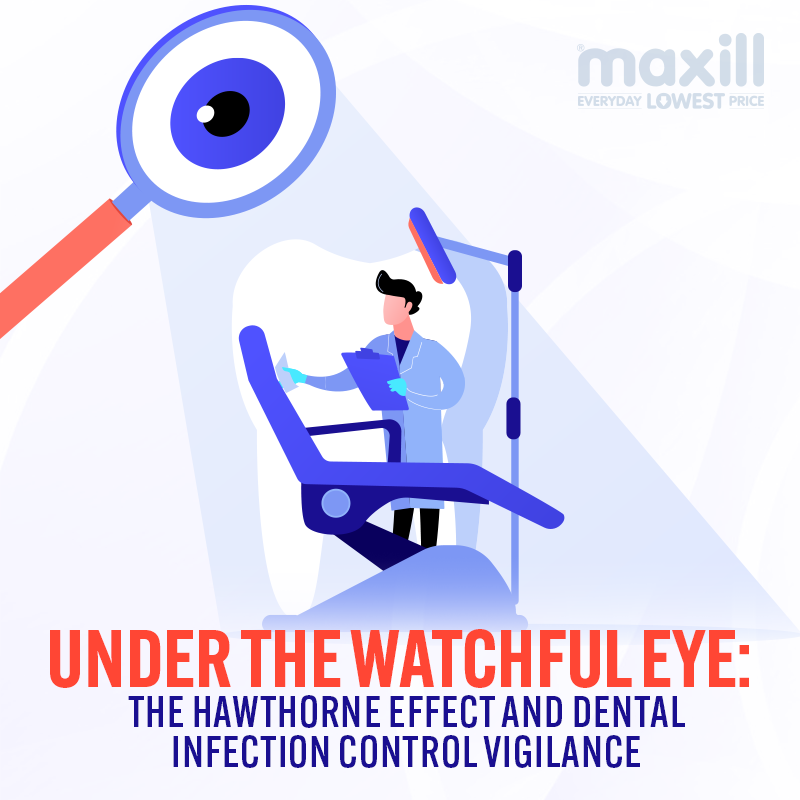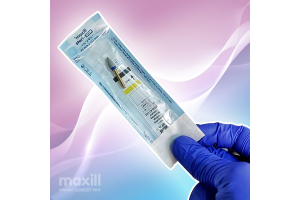Under the Watchful Eye: The Hawthorne Effect and Dental Infection Control Vigilance

Infection control in dentistry is critical to ensuring dental practitioners' and patients' health and safety. With the rise of infectious diseases and the need for stringent practices to prevent their spread, compliance with infection control protocols is of utmost importance in the dental industry. However, achieving full compliance can be challenging, as healthcare providers may demonstrate the Hawthorne effect, impacting their behavior and adherence to recommended guidelines. This article explores the concept of the Hawthorne effect in relation to infection control in dentistry and discusses strategies to ensure effective compliance.
The Hawthorne effect, initially discovered through a series of studies in the 1920s and 1930s at the Western Electric Hawthorne Works in Chicago, refers to the phenomenon where people modify their behavior due to the awareness or perception of being observed. In the context of infection control in dentistry, dental practitioners may exhibit the Hawthorne effect when their adherence to recommended guidelines increases when they know they are being monitored. This effect can lead to temporary changes in behavior, such as improved hand hygiene and proper use of personal protective equipment (PPE), solely during periods when compliance is observed. However, once the monitoring ceases, there is a risk that the Hawthorne effect diminishes and adherence to infection control measures declines.
Dental practices should implement strategies that address the Hawthorne effect to ensure long-term and sustainable compliance. These strategies may include ongoing monitoring and feedback, regular education and training, fostering a culture of safety and accountability, and implementing technologies that facilitate compliance. By understanding and mitigating the Hawthorne effect, dental practices can enhance infection control standards and provide a safer environment for dental practitioners and patients.
Establishing a culture of infection control within a dental practice is crucial for long-term compliance and patient and staff safety. This culture encompasses the shared values, attitudes, and behaviors of all individuals within the practice, from the dental practitioners to the supporting staff.
One key aspect of fostering a culture of infection control is effective communication. Open and transparent communication channels allow for dissemination of information regarding infection control guidelines, updates, and protocol changes. Regular team meetings and educational sessions can provide platforms for discussing infection control practices and addressing concerns or questions.
Another vital element is leadership. Assign a dental team member to be the infection control coordinator or who can consistently prioritize and emphasize the importance of infection control. The infection control coordinator will play a pivotal role in setting the tone and expectations for infection control within the workplace. By setting a good example and implementing an infection control program for the office, they can influence the attitudes and behaviors of their team members, promoting a culture of compliance.
Creating an environment of accountability and recognition can encourage individuals to take ownership of their infection control responsibilities. Recognizing and rewarding staff members who consistently adhere to infection control protocols can reinforce positive behavior and motivate others to do the same.
Understanding how to implement effective infection control protocols within a dental practice is essential. By following these protocols, dental professionals can significantly reduce the risk of infections spreading and ensure the safety of both patients and staff.
One of the first steps in implementing effective infection control protocols is conducting a thorough risk assessment. This assessment should evaluate potential risks in various practice areas, including patient contact, instrument sterilization, and environmental cleanliness. Identifying these risks will help determine the specific measures needed to mitigate them.
Next, dental practices should develop comprehensive infection control policies and procedures based on evidence-based guidelines such as those provided by the Centers for Disease Control and Prevention (CDC) and the Occupational Safety and Health Administration (OSHA). These policies should outline the steps and protocols for hand hygiene, personal protective equipment usage, sterilization of instruments, and proper disposal of biomedical waste. Regular and ongoing training is crucial to ensure that all staff members are aware of and trained in these infection control protocols. Training sessions should cover the latest guidelines, review proper techniques and procedures, and address any questions or concerns from staff members.
In addition to training, auditing and monitoring compliance with infection control protocols is essential. This can be done through spot-checks, observations, and periodic reviews of infection control processes. Auditing helps identify areas of improvement and reminds staff members of the importance of adhering to infection control protocols.
One of the critical factors in ensuring compliance with infection control protocols in dental practices is providing adequate training and education for dental professionals. Training sessions should be conducted regularly to update staff members on the latest guidelines and best practices in infection control. These sessions should cover hand hygiene, personal protective equipment usage, sterilization techniques, and environmental cleaning and disinfection.
It is essential for dental professionals to fully understand the rationale behind these protocols, as well as their potential impact on patient safety and overall practice reputation. By providing comprehensive education, dental practices can empower their staff to adhere to infection control protocols consistently. Ongoing education should be emphasized to keep dental professionals abreast of any updates or new research findings in infection control. This can be done through continuing education courses, webinars, or conferences.
Monitoring and assessing compliance with infection control measures is vital to maintaining a safe and hygienic dental practice. Once dental professionals have the necessary training and education, assessing their adherence to infection control protocols is crucial.
Various methods can be used to monitor and evaluate compliance. One practical approach is conducting regular audits or inspections of the dental practice. These audits can assess multiple aspects of infection control.
Another helpful tool is implementing a system for reporting and addressing any breaches of infection control protocols. This can be done through anonymous reporting mechanisms or regular staff meetings where concerns can be raised and discussed.
Patient feedback can also be utilized to evaluate compliance with infection control measures. Patient satisfaction surveys can include questions specific to infection control practices, allowing patients to provide feedback on their perceptions of cleanliness and safety within the dental practice.
By regularly monitoring and evaluating compliance, dental practices can identify areas for improvement and take appropriate measures to address deficiencies. This helps maintain a safe clinical environment and demonstrates a commitment to infection control and quality assurance.
It is essential to understand the Hawthorne effect to stay current and ensure compliance with infection control protocols in dental offices. This phenomenon, in which individuals change their behavior when they know they are being observed, has been shown to impact compliance with infection control practices. By studying and staying informed about the Hawthorne effect and its implications for dental office infection control, you can take proactive steps to promote a culture of compliance and maintain the highest patient safety standards. Stay informed, continue learning, and prioritize dental practice compliance.
References
Chen, L. F., Vander Weg, M. W., Hofmann, D. A., & Reisinger, H. S. (2015). The Hawthorne Effect in Infection Prevention and Epidemiology. Infection Control and Hospital Epidemiology, 36(12), 1444–1450. https://doi.org/10.1017/ice.2015.216





